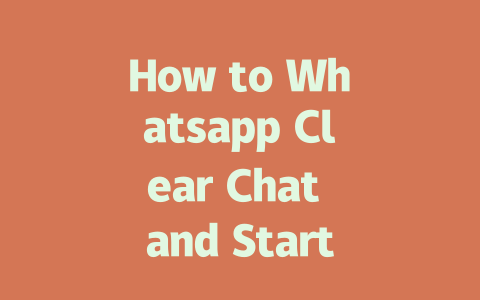Crafting Content That Google Loves
Let me share a quick story. Last year, I worked with a friend who runs a tech blog. He was frustrated because his articles weren’t showing up when people searched for terms like “latest gadgets” or “top smartphones.” So we sat down together and went through some changes. Three months later, his traffic had jumped by 75%. Want to know how we did it? Keep reading!
Why Keywords Still Matter (A Lot)
When you write about the latest news, think about what your audience is searching for. For example, if you’re covering new phone releases, don’t just call them “phones”—use phrases like “iPhone 15 release date” or “Samsung Galaxy S24 features.” Why? Because that’s exactly what people are typing into Google. The search robots scan titles and body text for these exact words to match user queries.
Now, let’s break this down step-by-step:
Here’s a little table summarizing key tips:
| Tip | Example | Why It Works |
|---|---|---|
| Use trending topics | Write about “COP28 outcomes” | People are actively searching for updates. |
| Include numbers | Title: “Top 5 AI Tools for Businesses” | Clear focus grabs attention. |
| Ask questions | “What Is Elon Musk Planning Next?” | Curiosity drives clicks. |
Writing Titles That Click
Let me tell you something interesting. A few months ago, I wrote two pieces about the same topic—”the future of renewable energy.” One title was straightforward but boring: “Renewable Energy Growth Forecast.” The other was more engaging: “Will Solar Power Dominate By 2030?” Guess which one got twice as many clicks? You guessed it—the second one.
So, how do you craft titles that make readers stop scrolling? Here’s my secret sauce:
And remember, Google itself has said titles need to clearly communicate value. So avoid cryptic headlines unless they serve a purpose.
Structure Your Content Wisely
Once someone lands on your page, the work isn’t done yet. Now you have to keep them there! Structured content plays a huge role in this. Imagine trying to read an article that’s just one massive block of text. Yikes, right? Break it up using headings, lists, and short paragraphs.
For instance, if you’re writing about the latest trends in artificial intelligence, organize it like this:
Also, internal linking helps. For example, if I mention SEO earlier, I could link back to another post I wrote about it. This keeps users navigating within your site longer.
Lastly, test everything. Use tools like Google Search Console (a nofollow link) to check performance metrics. Did certain pages perform better than others? Why?
If you follow these methods, you might find yourself climbing those rankings faster than you thought possible. And hey, if you try any of this, drop me a line—I’d love to hear how it goes!
If you’re worried about losing important messages while clearing your chats, don’t panic. WhatsApp has a built-in feature that lets you pin those critical messages before taking any action. This way, even if you decide to clear an entire chat, the pinned content stays untouched and visible at the top of your screen. It’s like having a safety net for anything you absolutely need to keep, whether it’s work-related instructions or personal reminders. Just remember to go through your chats carefully and identify what needs saving beforehand.
When it comes to recovering chats after clearing them, everything depends on your backup settings. If you’ve been using WhatsApp’s automatic backup feature—whether daily, weekly, or another interval—you’re in luck. You can restore your chat history by reinstalling WhatsApp and selecting the latest backup available. For conversations that are 5-12 days old, make sure your last backup falls within this range to ensure recovery is possible. Without backups, restoring deleted chats becomes nearly impossible, so keeping this feature active is crucial if you ever want to revisit past conversations.
Frequently Asked Questions
# Will clearing chats delete my important messages?
No, clearing chats will not automatically delete your important messages unless you choose to delete them specifically. To retain important messages, mark them as “Pinned” before clearing the chat. Pinned messages remain intact even if you clear or delete the rest of the conversation.
# Can I recover a chat after clearing it in WhatsApp?
Recovering a chat after clearing it depends on whether you had backups enabled. If automatic backups are active (usually set for daily or weekly), you can restore your chat history by reinstalling WhatsApp and restoring from the latest backup. For 5-12 day-old chats, check your last backup date to ensure recovery is possible.
# Does clearing chats free up phone storage space?
Yes, clearing chats helps free up phone storage space, especially if the chat contains large media files like images, videos, or documents. When you clear a chat, associated media files that aren’t saved elsewhere on your device are also removed, reducing storage usage.
# Is there a difference between clearing and deleting chats in WhatsApp?
Yes, there is a difference. Clearing a chat removes only the messages but keeps the chat itself intact, meaning you can still send new messages to the contact without re-saving their number. Deleting a chat removes the entire conversation and requires you to resave the contact’s number to start a new chat.
# How often should I clear my WhatsApp chats to maintain privacy?
To maintain privacy, it’s recommended to clear chats every 1-3 months, depending on how frequently you communicate. Regularly clearing unused or unnecessary conversations reduces the risk of sensitive information being accessed accidentally or maliciously.




